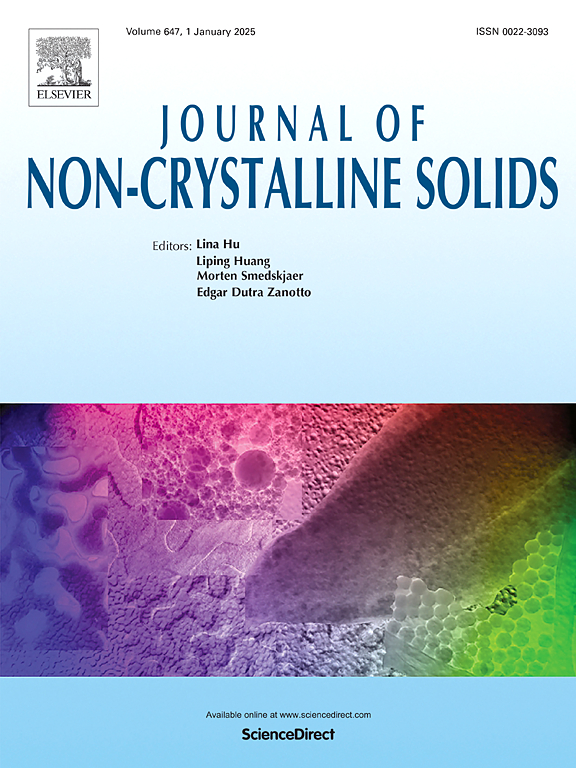Dissolution behavior of Ag-doped antibacterial borosilicate glass powders blended into polypropylene
IF 3.5
3区 材料科学
Q1 MATERIALS SCIENCE, CERAMICS
引用次数: 0
Abstract
Silver-doped borosilicate glass powders are frequently embedded into polymer matrices for potential antimicrobial applications. To assess the long-term release kinetics of Ag-containing borosilicate glass powder in polymer matrices, polypropylene (PP) blended with 5 wt% Ag-doped borosilicate glass powders was fabricated via the melt blending process. Additionally, immersion tests were conducted at 60 °C for up to 169 days under both dynamic (water flow rate ∼220 mL/day) and static aqueous conditions. Notably, both boron (B) and sodium (Na) exhibited stable release (0.1–0.4 ppm) over 90 days under dynamic conditions. SEM analysis revealed near-complete dissolution of the glass adjacent to the surface (depth: ∼0.2 mm), while the centrally embedded particles (depth: ∼1.0 mm) remained largely intact. Under static conditions, the concentrations of B and Na increased parabolically up to day 76 and attained kinetic equilibrium by day 103. This was followed by linear increases (∼83.9 ppm B, ∼97.1 ppm Na by day 169), which correlated with the appearance of Na-rich flake-like precipitates. Although the congruent dissolution profiles of B and Na remained similar under both conditions, the slower rate under static conditions was attributed to limited water penetration within the PP matrix.
掺银抗菌硼硅酸盐玻璃粉在聚丙烯中的溶解行为
银掺杂硼硅酸盐玻璃粉末经常嵌入到聚合物基质中,用于潜在的抗菌应用。为了研究含银硼硅酸盐玻璃粉在聚合物基体中的长期释放动力学,采用熔融共混工艺制备了掺银硼硅酸盐玻璃粉和聚丙烯(PP)。此外,在动态(水流量~ 220 mL/天)和静态水条件下,在60°C下进行长达169天的浸泡试验。在动态条件下,硼(B)和钠(Na)在90天内均表现出稳定的释放(0.1 ~ 0.4 ppm)。扫描电镜分析显示,靠近表面的玻璃(深度:~ 0.2 mm)几乎完全溶解,而中心嵌入的颗粒(深度:~ 1.0 mm)基本保持完整。在静态条件下,B和Na的浓度在第76天呈抛物线上升,在第103天达到动力学平衡。随后是线性增加(到第169天,B浓度为~ 83.9 ppm, Na浓度为~ 97.1 ppm),这与富Na片状沉淀物的出现相关。尽管在两种条件下B和Na的完全溶解曲线保持相似,但在静态条件下较慢的溶解速率归因于PP基质中有限的水渗透。
本文章由计算机程序翻译,如有差异,请以英文原文为准。
求助全文
约1分钟内获得全文
求助全文
来源期刊

Journal of Non-crystalline Solids
工程技术-材料科学:硅酸盐
CiteScore
6.50
自引率
11.40%
发文量
576
审稿时长
35 days
期刊介绍:
The Journal of Non-Crystalline Solids publishes review articles, research papers, and Letters to the Editor on amorphous and glassy materials, including inorganic, organic, polymeric, hybrid and metallic systems. Papers on partially glassy materials, such as glass-ceramics and glass-matrix composites, and papers involving the liquid state are also included in so far as the properties of the liquid are relevant for the formation of the solid.
In all cases the papers must demonstrate both novelty and importance to the field, by way of significant advances in understanding or application of non-crystalline solids; in the case of Letters, a compelling case must also be made for expedited handling.
 求助内容:
求助内容: 应助结果提醒方式:
应助结果提醒方式:


